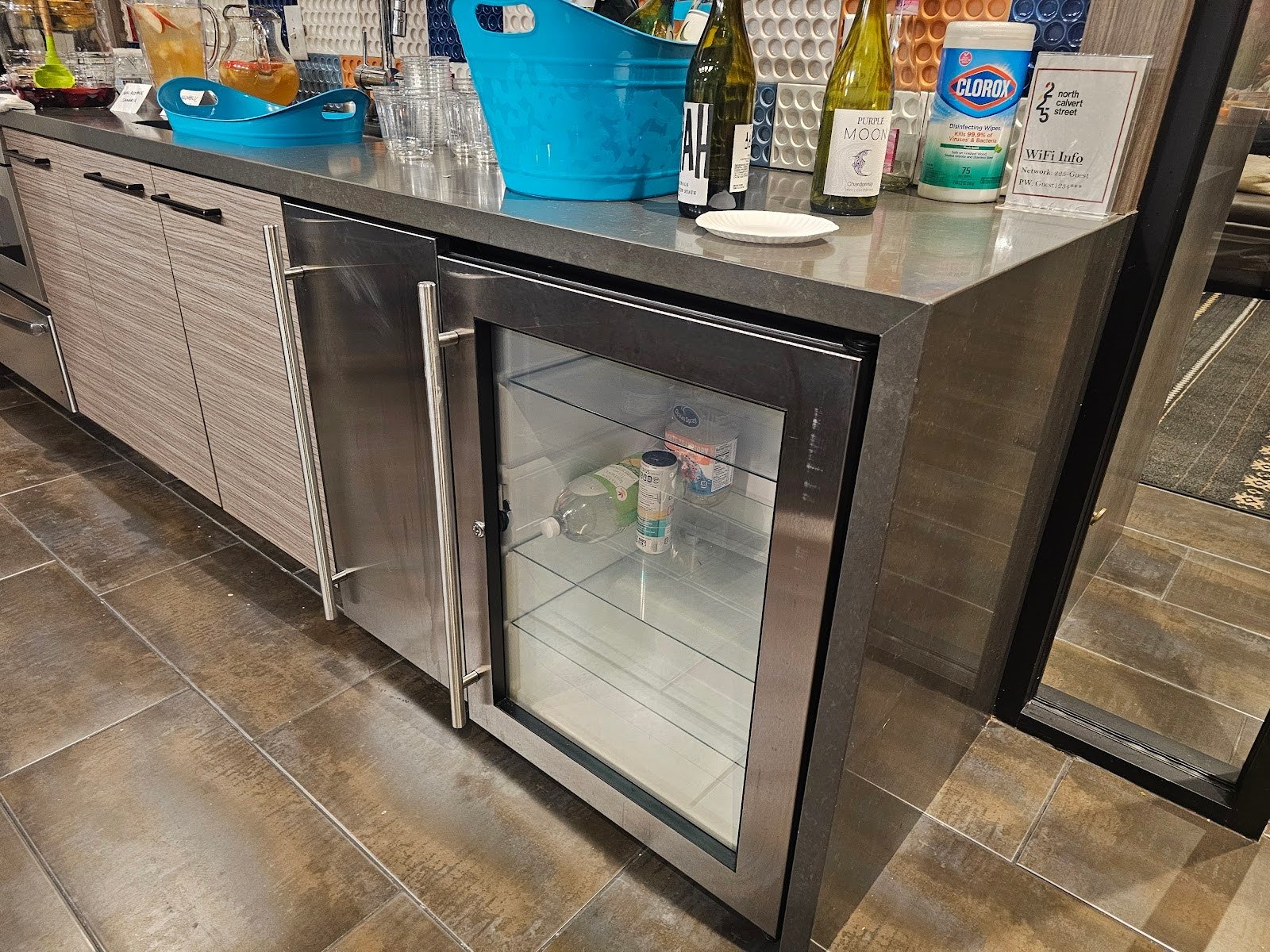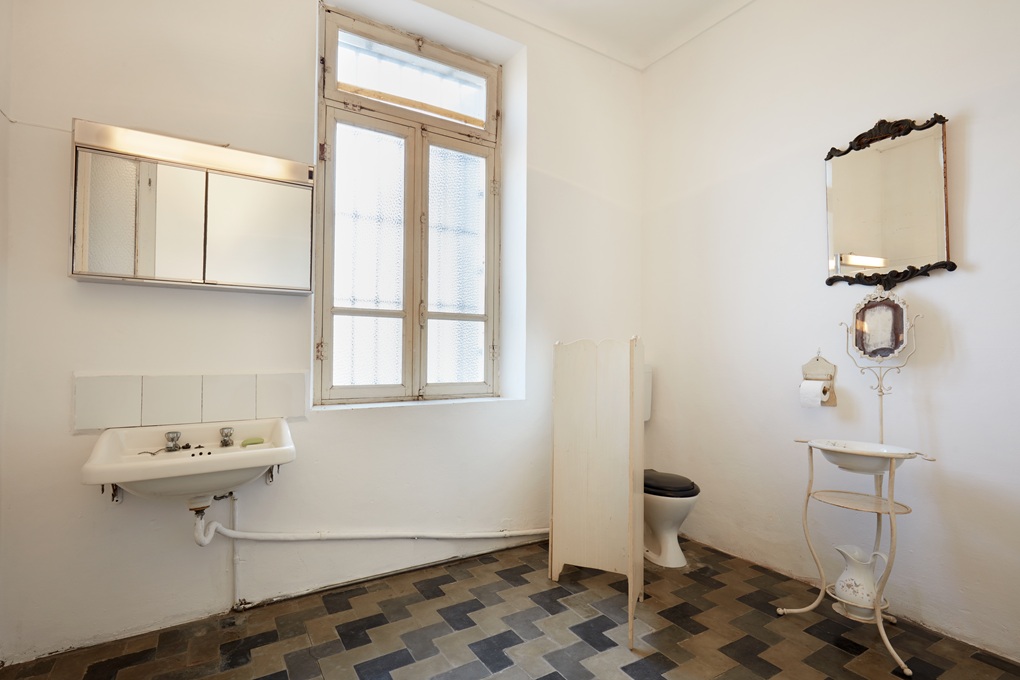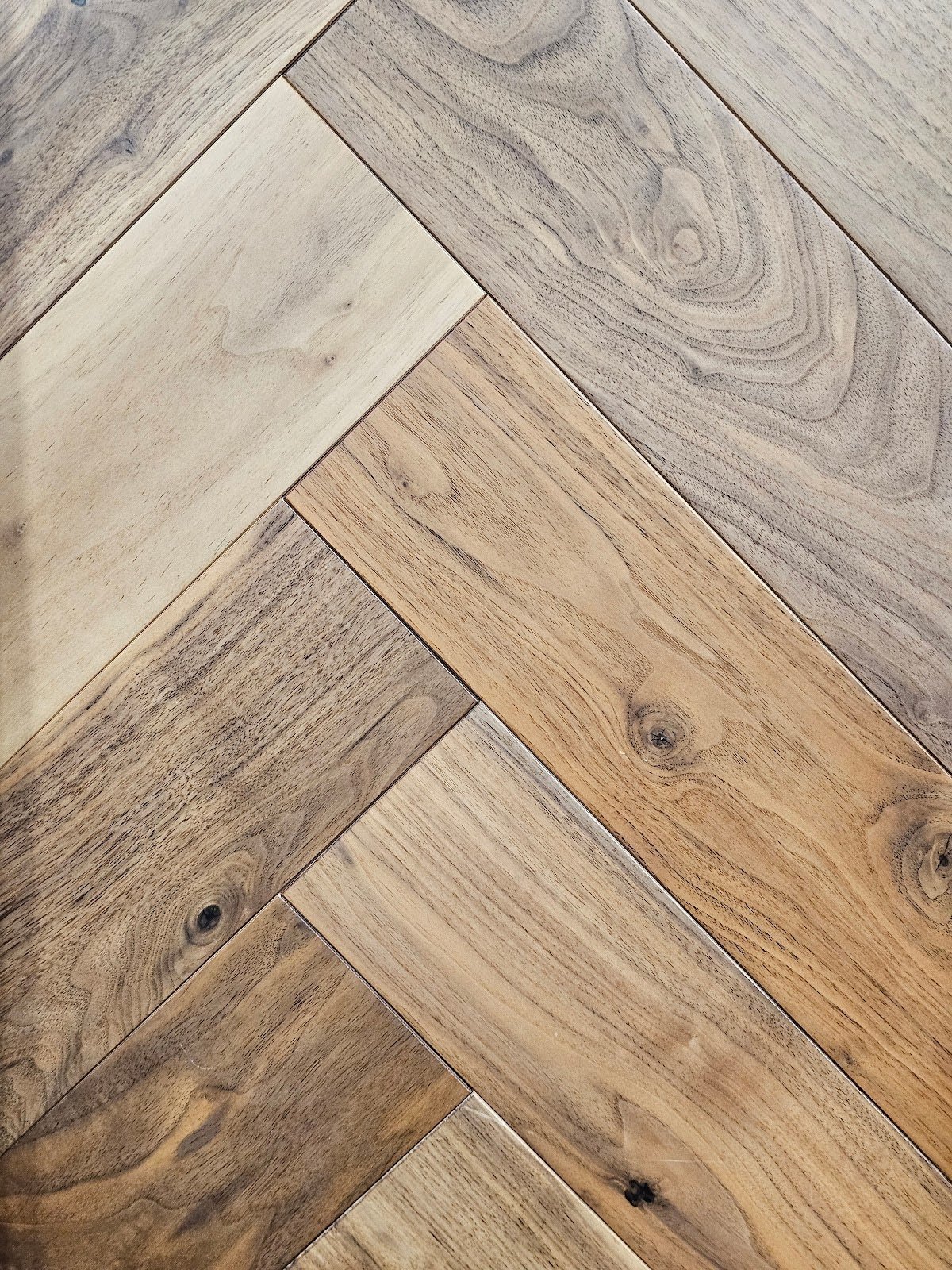Tile Kitchen Backsplash with a Herringbone Design Twist
Over the past 18 months or so we’ve looked at a wide variety of different kitchen design details, here on our website. This includes a wide range of genres and themes of kitchens. Some can look modern or contemporary and others can look traditional. Some are colorful and others are minimalist and colder. In general, the herringbone type pattern isn’t necessarily more indicative of one style or another, but it does look a bit more busy and more detailed than a typical minimalist type of installation. The picture below shows that herringbone pattern which spans across multiple different vertical rows of tile even within just one portion of the angle of the herringbone pattern.
Each alternating courses of tiles meet at a single smaller piece of tile at the corner. Each one of them lays out so that the point of the joint is not a miter between two pieces, commonly found in a typical herringbone pattern. Instead, here, a single piece point is set into the lower part of a joint of a pair of tiles in the pattern. The successive alternating pair of tiles above that joint is created with a joined miter.
Instead of the individual pieces of tiles being separated by a spacer, which will allow for the later installation of a grout joint, the tile courses each have a gold edge at the perimeter which essentially consumes the space in which a grout line with typically fill. Instead, here, the back is battered with a typical tile mosaic mortar, yet only a super fine grout joint can be set at the surface.
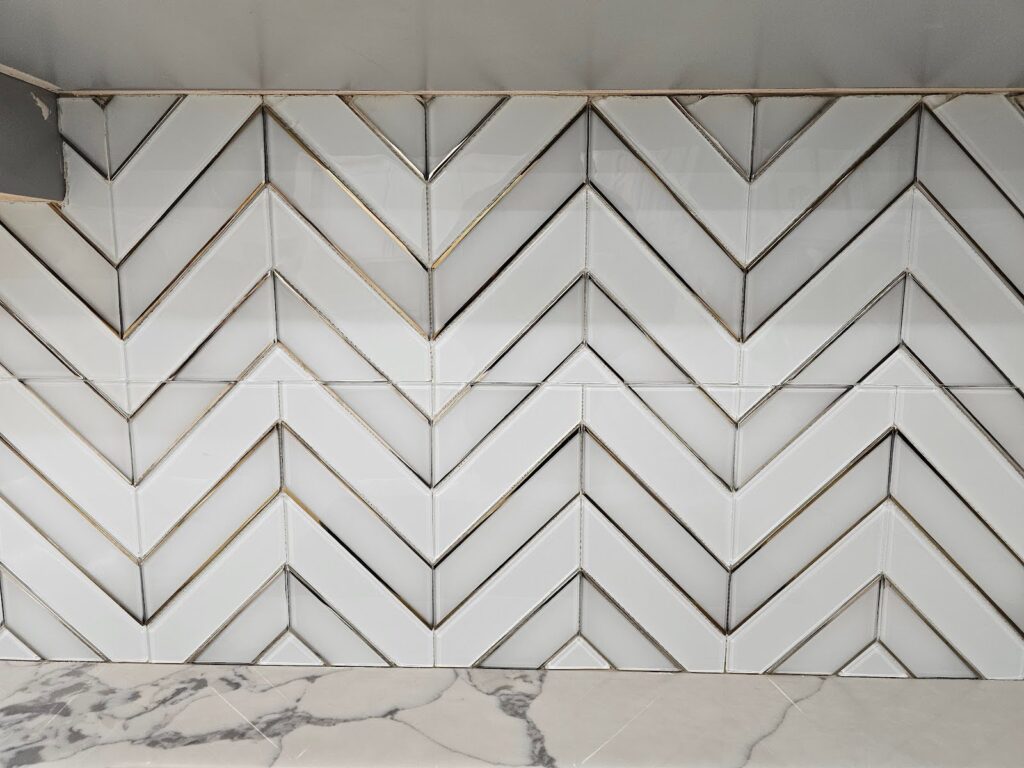
From a functional perspective this is a little bit different, but it’s not actually a better or worse characteristic. It does look more refined. The metallic gold aesthetic of the line between the tiles is definitely a more contemporary or modern type of element. In historic times, tiles that were manufactured with an intentional artistic metallic edge were uncommon. In fact, for the majority of the long history of the use of ceramics and porcelain type tiles, many of the glass tiles and metallic finishes that we commonly see today were unheard of tgen.
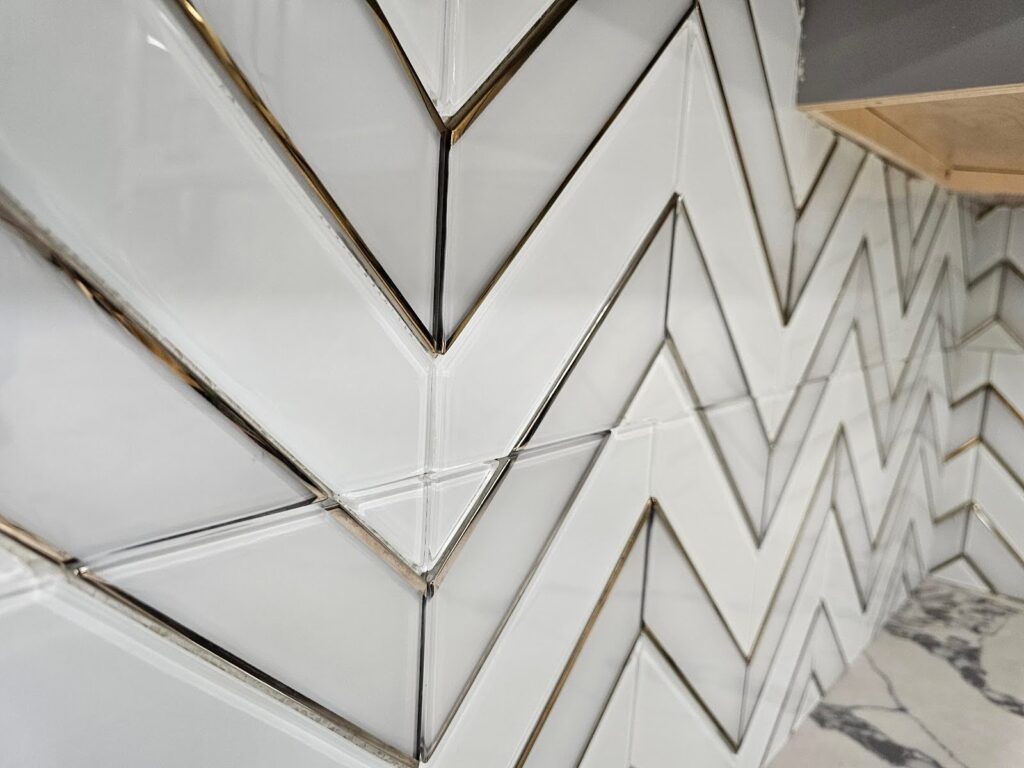
The grout joint is so fine that you can barely see it until you get very close to the face of the tile. It hasn’t been perfectly applied. You can tell that, here in the pictures below. In fact, since it was such a fine joint, it looks like the installer may have given less attention to grouting since it would be harder to notice. There are two different main classifications for tile grout. At relatively thin joints like this, an unsanded grout is more commonly used. For grout joints of about 3/16 of an inch or larger, sanded grout is generally used.
Sanded grout works better in wider spaces. As the name implies, sanded grout has a significant portion of sand mixed into the otherwise mostly cementitious grout. Grout is a bit like a glue or a brick mortar that hardens and binds things together. Grout also helps to keep foreign materials out of the space between the individual tiles. That’s important because foreign materials that don’t belong there can discolor and or damage the grout and or the edges of the tile. Grouting meanwhile can help keep the tile clean and makes a surface much easier to clean with water during routine maintenance cycles.
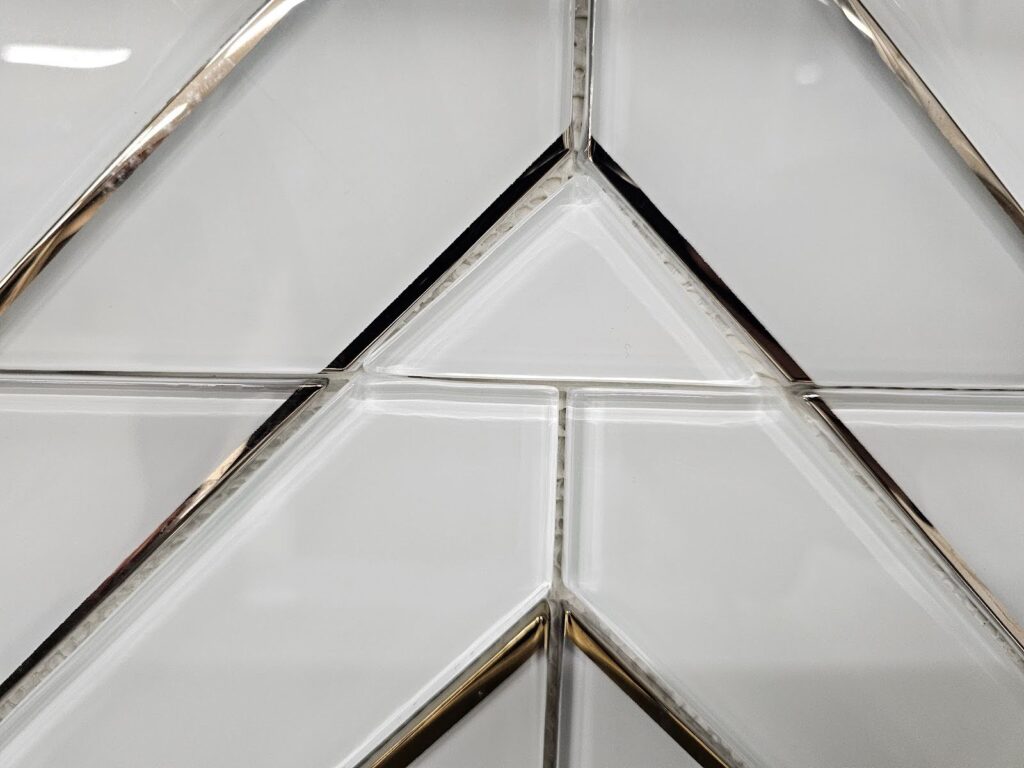
The next picture below shows the side of a gray pantry cabinet that was installed in this kitchen. The light gray color of the shaker style cabinet complements the light gray color alternating band of the pattern of the herringbone tile. These particular cabinets have American style doors that sit proud, mounted on top of the style and rail at the front of the cabinet carcass.
By comparison, European style doors will extend to the edge of the cabinet box and the European style cabinets do not have a common style and rail that wraps around the front face of the cabinet. Instead, the door will be slightly larger and run all the way from edge to edge around the perimeter of the sides and tops and bottoms of each cabinet box.
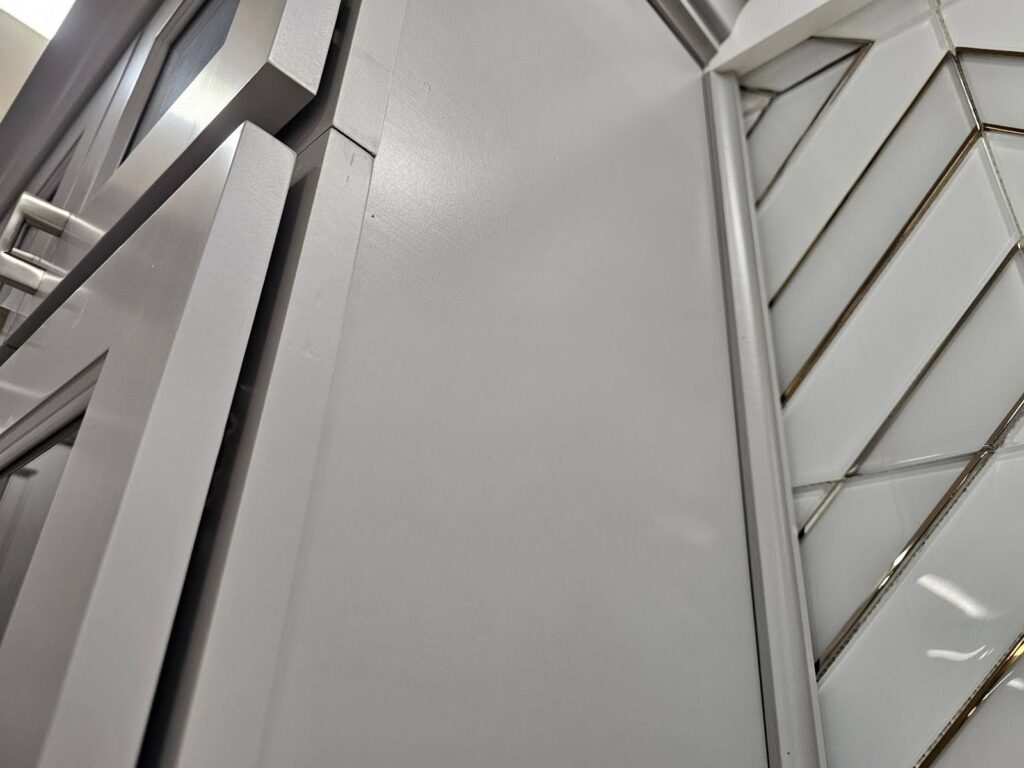
Here, in the next picture below, you can see the herring bone ceramic or porcelain tile pattern as it meets up against the side of a pantry cabinet mounted onto the wall of the kitchen. These particular cabinet doors have glass instead of an opaque wood panel. The clear glass allows someone to do a visual inventory of the contents of the cabinet without having to open up each cabinet door. However, by having a glass door, it also implies that the type of storage and the organization of the storage becomes much more important. If the cabinet happens to be filled with a wide variety of different things, it might look disorderly through a glass panel.
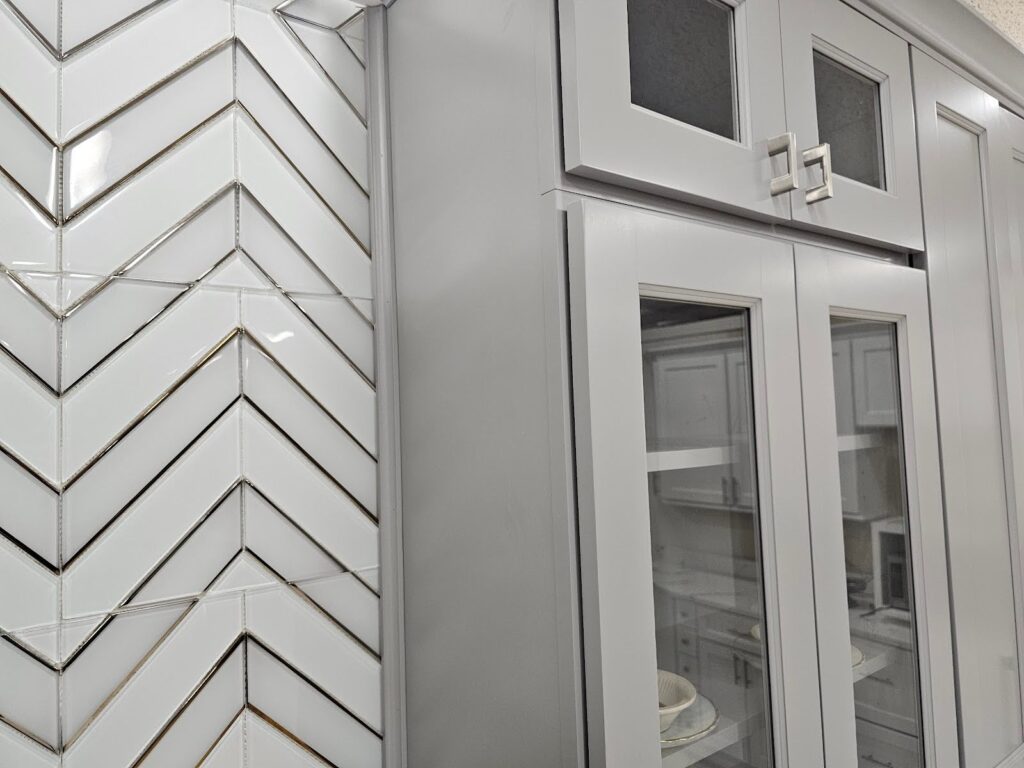
Dupont Kitchen & Bath Can Help
As dedicated and local DC metropolitan kitchen and bath builders and installers, we pride ourselves on turning your visions into reality. Your kitchen and bathrooms can reflect your unique style and be designed with personalized aesthetics. It can be a process from creative designs to the realization of your dream space. Specializing in kitchen and bath construction, we bring expertise and skills to every project. If you’re contemplating a renovation, upgrade, or modernization in the local market, we’re happy to be your team. Consult with us, and we can start together on a path to redefine and elevate your DC living experience.
You can visit our company website at https://dupontkitchenbathdc.com/
Here at our website you will find a simple and convenient web form that you can fill to contact us quickly.

